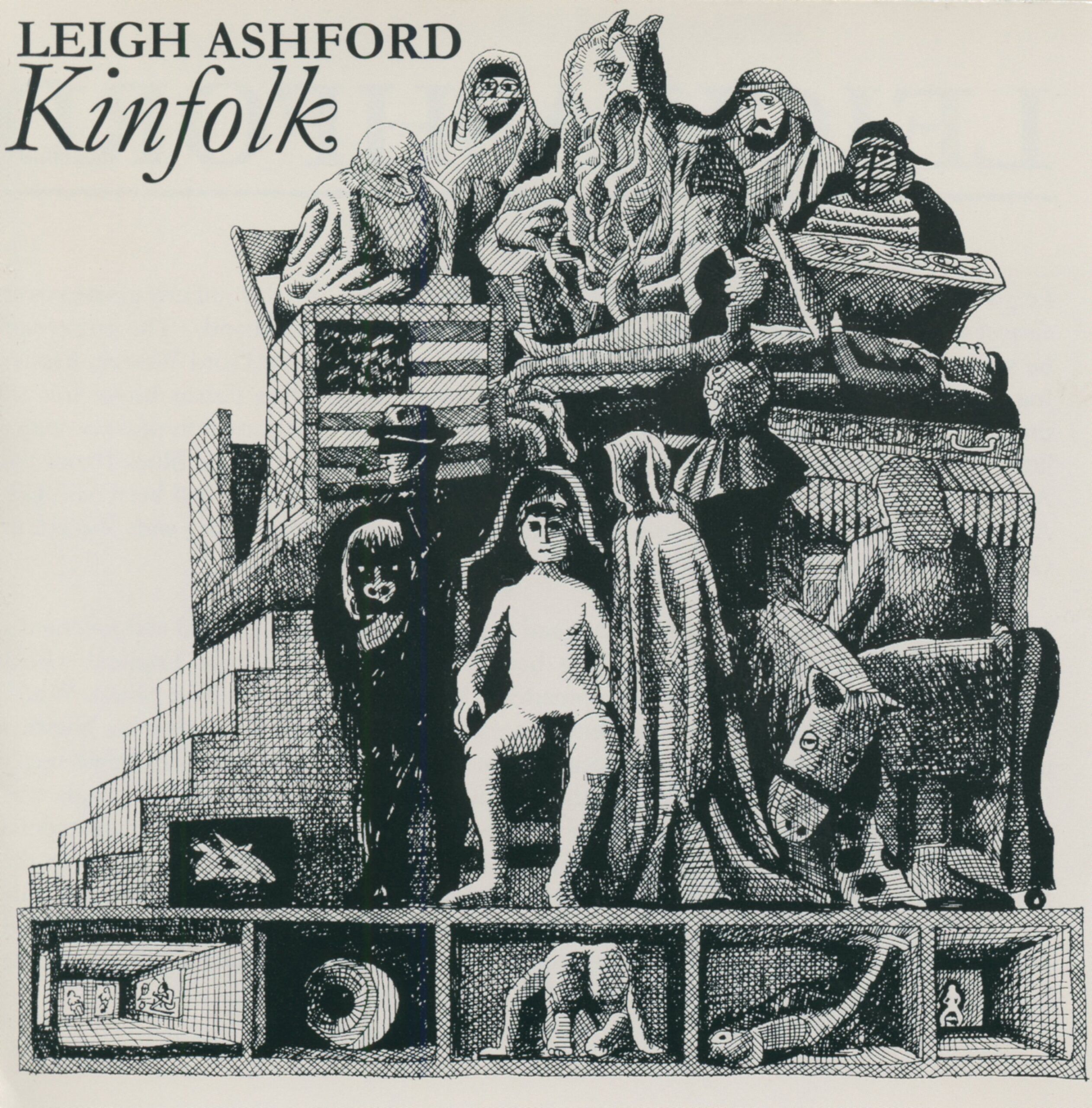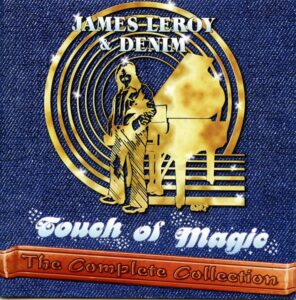Leigh Ashford is best known as “the band that became Moxy“, but this unfairly glosses over almost ten years near the top of the heap of Toronto’s dance and bar bands. The group can be said to have been born in the late spring of 1967, when guitarist Gord Waszek, bassist Joe Agnello, organist Newton Garwood, and drummer/singer Dave Cairns broke free of the Spirit Revue. The short-lived Revue had been an unwieldy amalgamation of three tough little rhythm and blues bands from Toronto’s east end: the Lee Ashford Blues Band; the Ambassadors; and Tom and Ian and the Soul Set. Garwood and Waszek had been with Lee Ashford, Agnello had been an Ambassador (though he’d played previously with Waszek in G.W. and the Demons), and Cairns had been with the Soul Set.
In a fit of creative genius, the quartet changed the spelling to Leigh Ashford and invented a crazy story about Leigh Ashford having been a prostitute in ye olde England who’d appeared to Agnello in a dream (or something like that)!! In 1970 The Guess Who’s producer Jack Richardson took them into the studio to record an album for his Nimbus label, but the sessions yielded disappointing results, possibly because drummer-singer Cairns took ill and had to bow out at the last moment. In the end only one single was released, with a recovered Cairns having returned to record his vocal over instrumental tracks done by the rest of the group with replacement drummer Wally Cameron from the Passing Fancy. Cameron’s work on the complex “Country Place”, included on this compilation, should not be overlooked. (For some reason another track on the unreleased album featured Dave Byngham from Toronto proto-punkers, the Ugly Ducklings, singing lead on his own song, “Hangman”.)
The subsequent final departure of Dave Cairns from the group left two holes – drums and vocals. The first was filled initially by Lance Wright from Terry and the Pyrates (whose bassist was Mike Levine, later of Triumph), then by Craig Kaleal from a Saskatchewan group, The Witness. The second was filled by Douglas ‘Buzz’ Shearman, who’d been singing with the Hamilton group Flapping. Shearman had previously replaced Eddie Schwartz in Mushroom Castle, which had cleverly renamed itself Sherman and Peabody in honour of Shearman’s name and singer/bassist Greg Godovitz’s owlish looks! No doubt Shearman’s departure for Leigh Ashford hurt for a while, but the others certainly recovered -Godovitz went on to Fludd and then his own band, Goddo; drummer Gil Moore put together Triumph with the aforementioned Levine; and Eddie Schwartz went on to make a bundle for writing “Hit Me With Your Best Shot”. All of these changes kept Leigh Ashford out of the studio for a while, with the exception of a brief foray to back Joe Agnello’s brother Sebastian on his first solo record, an odd necro-rocker entitled “Jimmy, Janis and Alan”. Things soon turned around, and 1971 saw the release of the Kinfolk album on Mort Ross’ Revolver label, which was then basking in the success of the Toronto group Motherlode.
The addition of Buzz Shearman’s piercing voice allowed Leigh Ashford to shake the common curse of many of the heavier Toronto rock bands of the time — lame multi-part “harmonies” that detracted from the impact of supercharged Toronto-style guitar and organ. The first single by the new lineup, “Dickens”, did very well in terms of airplay and reasonably well in terms of sales, but the next two were undeserved flops. “Good Day”, for instance, remains an exceptionally good number, in terms of both performance and production (barring some silly percussive effects), and shows considerable development from the group’s Nimbus days. Waszek’s guitar playing on the earlier “Country Place” had mainly echoed the sounds that Robbie Robertson had been making in local clubs years earlier. His playing on the album, however, was much more resourceful and stunningly versatile.
Waszek’s brilliance and Shearman’s brisk vocal style, combined with the tight work of Kaleal, Agnello and Bruno Weckerle (who’d replaced Newton Garwood in 1970), created a fresh and punchy sound. Nevertheless, great success was not forthcoming and in 1972 the band folded for the usual rock and roll reasons. After a short break, Shearman and Waszek put together a edition of the band with bassist Don Elliot from Toronto’s legendary soul group, The Mandala, and early Leigh Ashford members Wally Cameron and Newton Garwood. (Cameron and Garwood had been involved with Shearman and Waszek in the then-recent attempt to revive the Motherlode name as a recording entity.) This lineup recorded a handful of sides in Toronto and in upstate New York for Mort Ross’ new label, Hopi. Two excellent numbers, “Workin’ All Day” b/w “The Country’s Got A Soul All Its Own”, were released as a single, but that too did nothing. Soon Waszek and Cameron packed it in and formed Burgundy with Doni Underhill (another Ashford alumnus) and others. After one single on Hopi, both Waszek and Underhill joined Fludd, with whom they achieved a modicum of success. Underhill eventually went on to even greater success as a member of Vancouver-based Trooper, but the perennially overlooked Waszek returned to the bar circuit.
Leigh Ashford survived Waszek’s departure and continued to draw reasonably well in the clubs around Toronto. However, the group had trouble regaining its spark and moved through a variety of styles and lineups. The only constant was Buzz Shearman, who finally managed to nail down a winning combination with Earl Johnson, Bill Wade and Terry Juric in 1975. Within a year that lineup ditched the old name in favour of “Moxy”, added second guitarist Buddy Caine, and headed for hard-rock stardom across North America. But that story is better told on Pacemaker’s Moxy compilation, Self-Destruction.
Notes by Bill Munson with thanks to Joe Agnello, Sebastian Agnello and Newton Garwood



